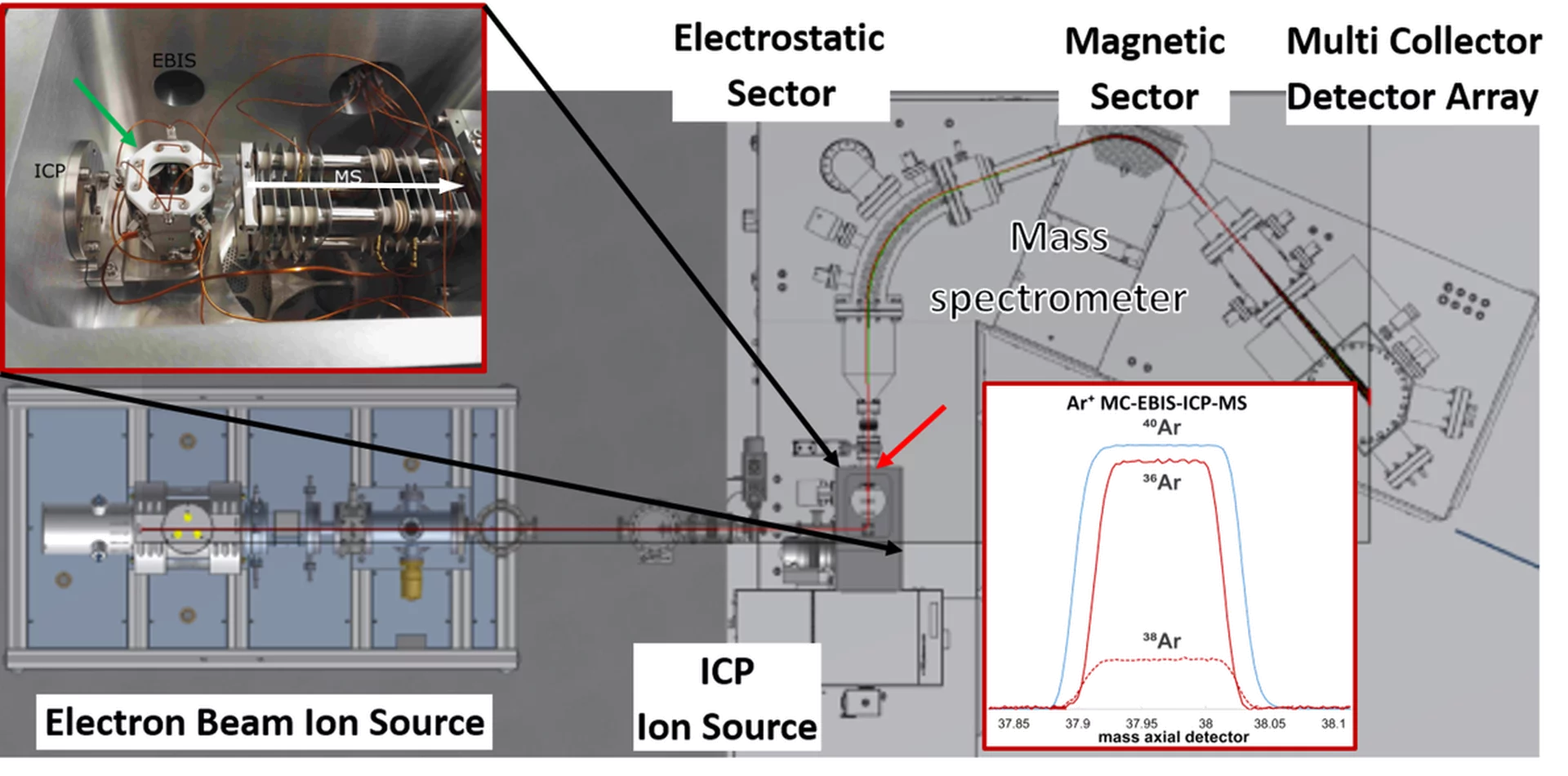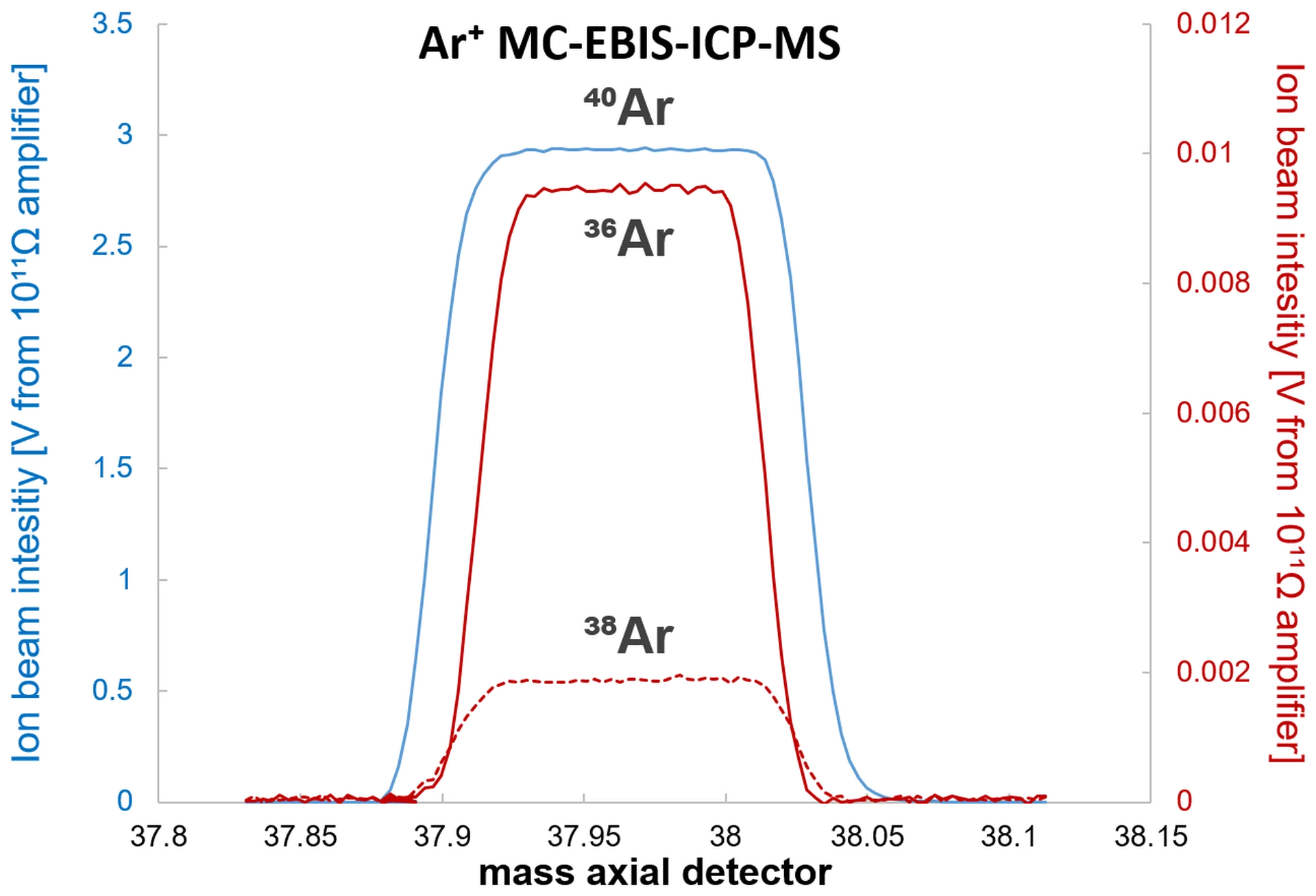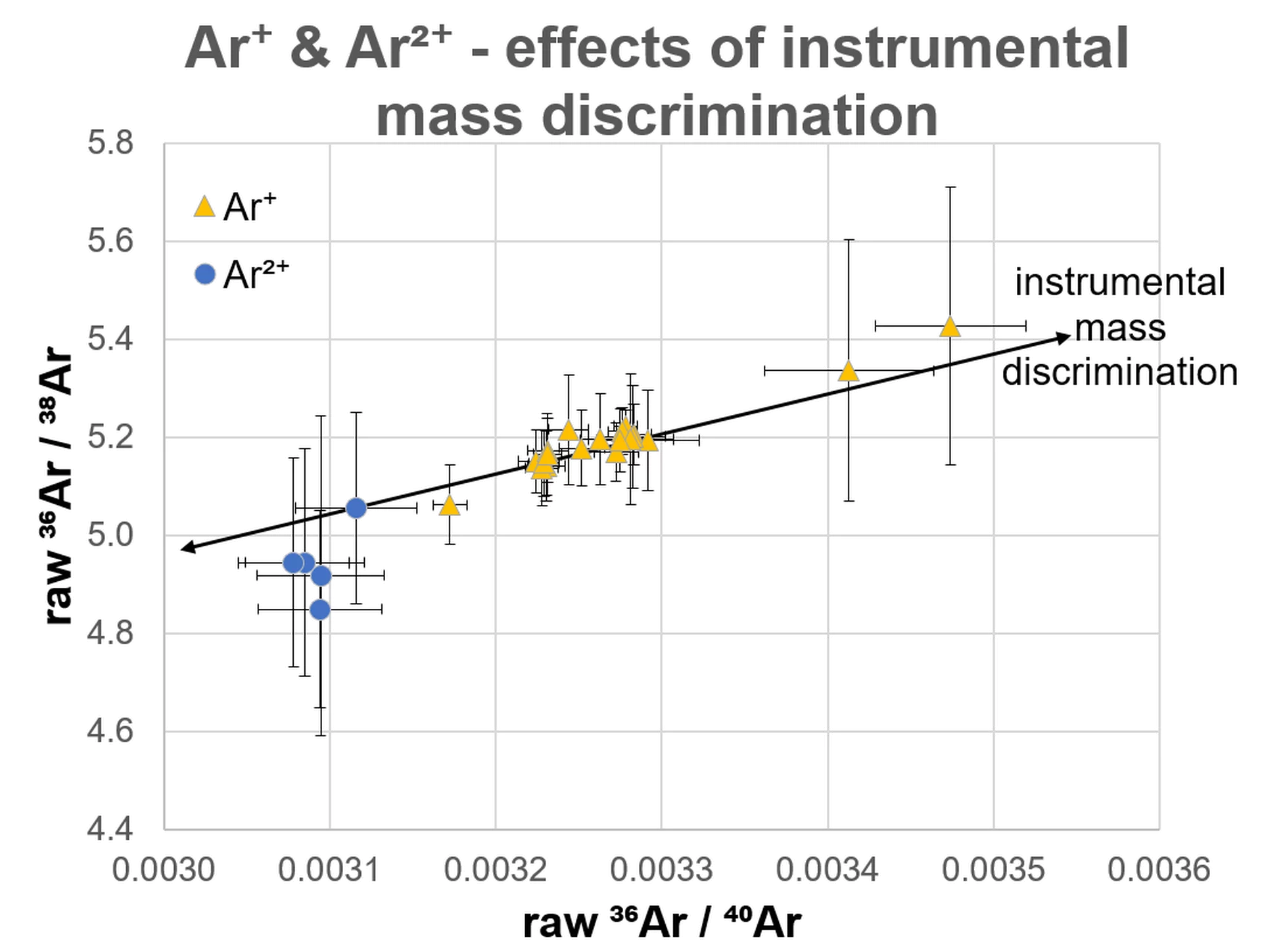To replace a previous quadrupole gas mass spectrometer and to improve and expand options for gas isotope analyses, AHL initiated the in-house development of a unique dual-ion-source multicollector mass spectrometer coupling a gas ion source to an adapted Nu Instruments “Plasma 3” Multicollector Inductively Coupled Plasma Mass Spectrometer (MC-ICP-MS).
The Plasma 3 at AHL is a double focussing sector field mass spectrometer (figure 1) equipped with 16 faraday and 6 ion counting detectors, permitting the simultaneous detection of up to 22 ion beams over a mass range of ca. 15%. Operating in atmosphere, its Argon ICP source is ill suited for the isotope ratio analysis of many gases including fissionogenic Krypton Kr80, which is strongly overlain by the Ar40Ar40 dimer. An in-house solution was developed, adding a gas ion source to the Plasma 3. The Dreebit “Dresden EBIS-A [1]” room temperature Electron Beam (gas) Ion Source (figure 1, EBIS) magnetically compresses an electron beam to ca. 0.5 mm width reaching electron current densities above 500 A/ccm. With an optional axial ion trap, it efficiently produces singly to fully ionized species such as He (1+ to 2+), C (1+ to 6+), Ar (1+ to 18+), Kr (1+ to 35+), Xe (1+ to 48+),…[1]. Thus, the gas source is apt to ionize the routinely studied fission gases Xe, Kr, and He in used nuclear fuel. Such studies reveal the degree of burn-up of nuclear fuel via isotopic compositions and contents of accumulated fission gases. Implementation of an interface for the unbiased introduction of sample and reference materials will complete the setup.
Adding an extra scientific dimension, the setup enables comparative mass spectrometry of different charge states. This route promises insights into mass discrimination processes at non-quantitative ion beam transmission. Highly charged ion mass spectrometry, so far, yielded inconsistent results concerning observed isotope ratios of diverse charge states [e.g., 2–4], hampering corrections for interfering signals from doubly charged ions in gas mixtures.
The dual-source MS must allow swift switching between ICP and EBIS mode. Therefore, the EBIS ion beam is running perpendicular to and in the same horizontal plane as the beam from the ICP source. The ion path union is realized by a custom miniature 90° DC-quadrupole beam bender [5,6] which is transparent to the ICP ion beam (figure 1 left red inset green arrow) and swiftly electrically switchable. Using a maximum of the MC-ICP-MS’s ion optics, the EBIS ion beam enters before the “transfer lens stack” focusing the beam onto the mass-resolution-defining entrance slit to the electrostatic sector (figure 1 red arrow & left red inset white arrow).
Figures 2 and 3 illustrate the successful operation in EBIS mode. Preliminary data for Ar (1+) and Ar (2+) (figure 3) as well as N (1+) and N (2+) (not shown) confirm changing isotope ratios with increasing charge state [3,4]. To a first degree, this systematic seems to follow empirical laws [e.g., 7] commonly in use to correct instrumental mass discrimination in ICP-MS. These observations lay the ground for improved corrections for doubly charged ions in analyses of gas mixtures. Further studies will evaluate the applicability of empirical laws for isotope ratio analysis using higher charge states.
[1] G. Zschornack, M. Kreller, V. P. Ovsyannikov, F. Grossman, U. Kentsch, M. Schmidt, F. Ullmann, R. Heller, Review of Scientific Instruments 2008, 79, 02A703, DOI: 10.1063/1.2804901.
[2] M. A. C. Hotchkis, D. Button, C. L. Waring, Rapid Communications in Mass Spectrometry 2008, 22, 1408, DOI: 10.1002/rcm.3513.
[3] A. G. Drentje, A. Girard, D. Hitz, G. Melin, Review of Scientific Instruments 1996, 67, 953, DOI: 10.1063/1.1146781.
[4] Y. Kawai, D. Meyer, A. Nadzeyka, U. Wolters, K. Wiesemann, Plasma Sources Sci. Technol. 2001, 10, 451, DOI: 10.1088/0963-0252/10/3/309.
[5] H. D. Zeman, Review of Scientific Instruments 1977, 48, 1079, DOI: 10.1063/1.1135188.
[6] J. W. Farley, Review of Scientific Instruments 1985, 56, 1834, DOI: 10.1063/1.1138105.
[7] W. A. Russell, D. A. Papanastassiou, T. A. Tombrello, Geochimica et Cosmochimica Acta 1978, 42, 1075, DOI: 10.1016/0016-7037(78)90105-9.
Author
Dr. Peter Sprung
Hotlaboratory, AHL, Radioactive Materials Analytics
+41 56 310 30 42
peter.sprung@psi.ch



